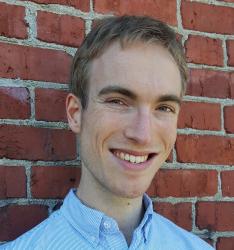Tiny glass vials filled with saliva, nail clippings, eyelashes and menstrual blood hung from a wall in Kaffibarinn this past week, not as a sacrificial offering but as something to attune us to the husks our own bodies leave behind. “I am always repeating that I am a woman,” says Wiola Ujazdowska, the artist behind the installation. Her piece, she says, became a meditation on the cultural pressure women face to feel attractive, to present themselves as objects of desire: “I was drawn to the idea of something rejected from the body—nails or hair or eyelashes. We are aware of these things on the body, but then they become disgusting when they’re outside the body.” The vials recalled votives in Catholic churches, which Wiola had admired throughout her childhood—something consecrated, dark and mysterious that connects the beholder to a deeper self.
Though her exhibit, ‘Rituals, Sweethearts and More’, lasted all of five days—opening on Easter Sunday and closing on 20 April—it stands out an extraordinarily powerful testimonial to feminine energy, physicality and human sexuality. With a diverse array of visual media, Wiola transformed the popular downtown bar into a sanctuary in which the grotesque could be rendered sacred.

Dissolving selfhood
One painting entitled “Not Her” shows an array of self-portraits, each one more faded than the last, as if the artist’s notion of selfhood is dissolving gradually. Wiola, who is from Poland but lives in Iceland, says that her work revolves around her Otherness—as a woman, an artist and an immigrant. For her, Otherness is a stigma as well as a privilege, offering her insights into the world that can only be glimpsed from the periphery. She stands on the edge of things, toying with the boundaries between life and death, form and formlessness. It is perhaps for this reason that Wiola associates so strongly with the idea of the witch—or “wiedźma” in Polish, which literally means “wise woman.” She often casts herself as a wiedźma in her work, subverting the notion of a witch as a malignant sorceress. Instead, the witch thrives in the unknown, in the suppleness and mutability of the world.
“When I’m creating, I have a weird feeling that I belong in a different reality,” says Wiola. “I’m in a trance, in a way; there’s something magical in it. I can’t explain the process of creation.”

Golden calf
She describes all of her work as minimalist. Her paintings depict bare, basic shapes. One piece is simply a framed clump of hair. Wiola is also in constant correspondence with other media: she takes others’ photographs and superimposes a black bar across the center, or paints a streak of white. Writing, in pencil, appears in the margins of several of her works. In another piece, she has taken a Baroque portrait of a girl holding a calf and glued golden fabric over the animal.
“My rituals are about redeveloping and researching my own subconscious, my own memory,” says Wiola. “I’m drawn to the void and the fear of death. I’ve lost people in my life, and I’m trying to understand it.”
At first glance, her display of dried flowers appears merely botanical. But Wiola is quick to explain that all of the species are used in funeral bouquets, and are considered cursed in Poland because they’re associated with death.
Wiola dried them and tagged them with Latin names, separating the flowers from their use in burial rites. “I took away the curse,” she says.

Find out more about Wiola’s work here.
Buy subscriptions, t-shirts and more from our shop right here!


















